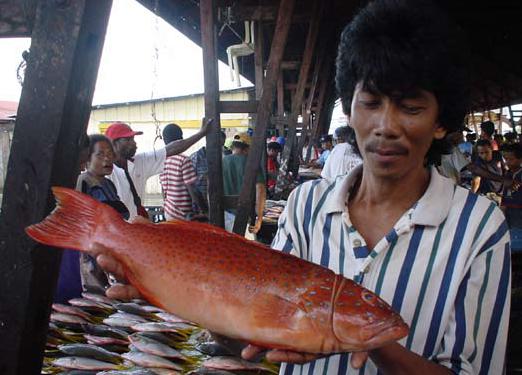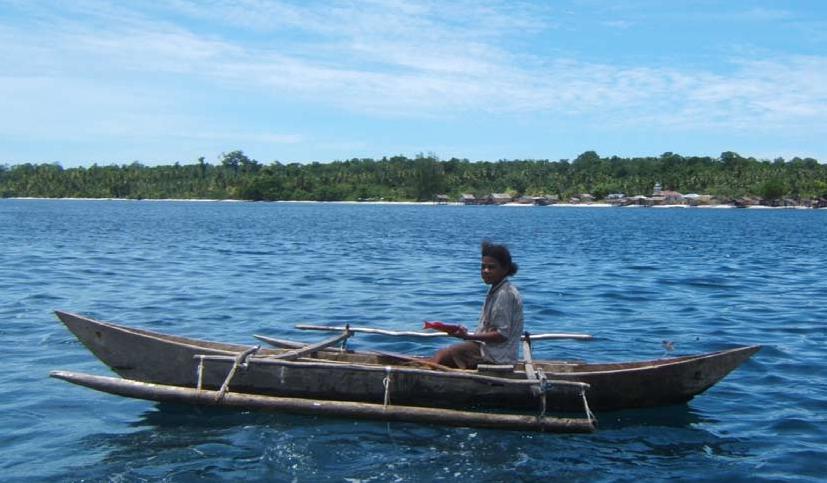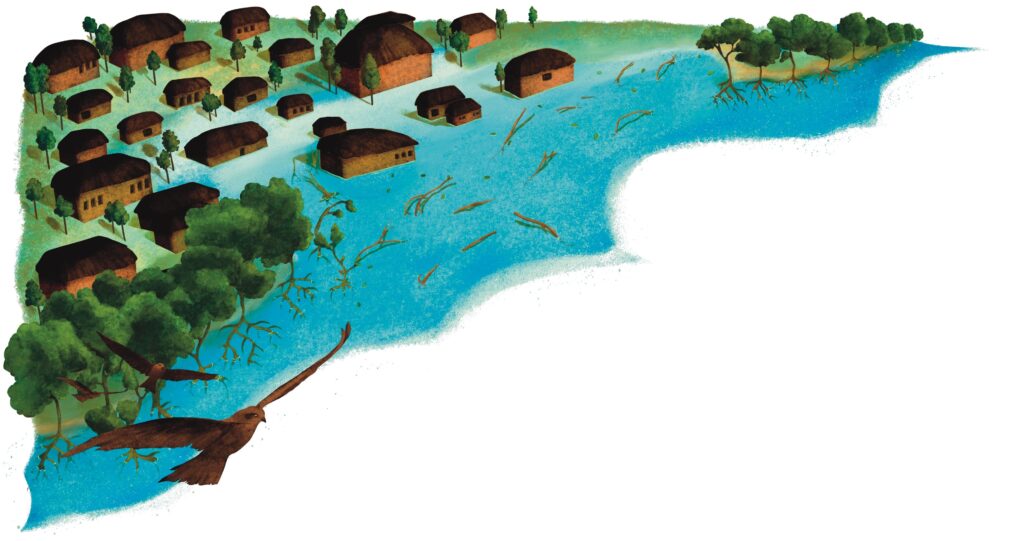Fishermen are known for telling stories, the best known being the giant fish that unfortunately was ‘the one that got away’. Cameron Ainsworth and Tony Pitcher, both of the University of British Colombia in Canada, and Christovel Rotinsulu of Conservation International Indonesia, think there’s more to these stories than just tall tales. As fisheries around the world show signs of collapsing, its becoming apparent that stories of large fish and abundant catches from the past may not be so far-fetched. What if older fishermen aren’t exaggerating about the good old days, but rather the younger generation don’t appreciate what has been lost?
In some waters, the number of fish has been reduced by years of over-harvest. The fish themselves can also be smaller due to the genetic effects of harvesting large fish for many years. Older fishermen have witnessed these changes, but younger fishermen lack the experience to recognise emerging ask, researchers may be told that the harvest is declining, or that it’s just fine. The health of the fishery could therefore be misdiagnosed. Second, if fishermen don’t recognise that their fishery is in decline, they will accept its current health as the status quo. This makes them less inclined to believe that something needs to be done to help the fishery.
Conservationists call this phenomenon a shifting cognitive baseline (SCB). SCBs can cause two major problems. First, poor countries usually lack historical data on how productive their natural resources once were. Ecologists determining the sustainability of a fishery therefore have to consult fishermen about how many fish there were in the past. If there has been a process of shifting cognitive baselines, many fishermen will not have accurate knowledge of what fishing was like previously. Depending on whom they ask, researchers may be told that the harvest is declining, or that it’s just fine. The health of the fishery could therefore be misdiagnosed. Second, if fishermen don’t recognise that their fishery is in decline, they will accept its current health as the status quo. This makes them less inclined to believe that something needs to be done to help the fishery.

According to Ainsworth and his team, SCBs have been identified in only a few fisheries. They set out to see if one existed in the Raja Ampat Archipelago of eastern Indonesia. This was done as part of an evaluation of what changes had taken place over the last 40 years in this fishery.
Raja Ampat is part of the Southeast Asia Coral Triangle, an area of remarkable coral diversity. Both artisanal and commercial fishermen work these waters. Despite a low human population, many of the typical threats to reefs are occurring there: increased fishing pressure, run-off from logging, dynamite fishing, and harvest of corals.
Because there was little historical data on the fishery, the researchers relied on the knowledge of local fisherman participating in projects sponsored by the NGO Conservation International. Over 200 fishermen were interviewed and asked to describe the status of 44 different species of fish. Fishermen ranked the abundance of each species as high, medium, or low for each decade since the 1970s. They also indicated which fish became less common over time, as well as if their price changed. These descriptions of abundance were then standardized against harvest data collected by the government since the 1990s. By knowing the number and size of fish in the fishery over the last two decades, the authors were able to back-calculate the status of the fishery through the 1980s and 1970s using trends established from the interview data.

Ainsworth and his collaborators had to overcome a major problem inherent in qualitative data – depending on age, experience, and expectations, one fisherman’s ‘high’ could be another’s ‘low’. For example, an experienced fisherman who knows the best places to fish for a certain species may report that its abundance is high. A younger fisherman who lacks experience may be less successful, reporting its abundance as low.
The authors addressed this problem with fuzzy logic. In normal logic, ‘high’, ‘medium’, and ‘low’ would be represented using discrete categories, such as 3 for high, 2 for medium, and 1 for low, with only these three values allowed. In fuzzy logic, categories are represented on a continuous scale. For example, high is designated 1, low is 0, and medium 0.5, with any value between 0 and 1 allowed.
Additionally, every answer is allowed to be a member of more than one group. If a fisherman said a species had medium abundance, his answer is given partial membership in both the high and the low categories. This fuzziness allows different groups to overlap, and makes it possible for one fisherman’s ‘high’ to be treated the same as another’s ‘low.’
Ainsworth and his colleagues concluded that there was a SCB among fisherman in the archipelago. Older fishermen indicated that fish had been more abundant in the past, while younger ones did so less often. Moreover, the most experienced fishermen had the greatest understanding of the decline. Though there were high levels of variability, the fuzzy analysis indicated perceived declines among all species in the fishery, including those not harvested. The older fisherman did not exaggerate about the ‘good old days’, either: the authors’ found evidence that some species may have declined by an order of magnitude since the 1970s.
Ainsworth and his collaborators conclude that the lack of precision in qualitative data is countered by the ease of collection and the breadth of knowledge fishermen possess. While government data indicated that some species were in decline, it did not indicate a community-wide decline. The Ainsworth team concludes that the use of indigenous knowledge is important in biodiversity assessment and that shifting cognitive baselines must be accounted for in fisheries studies.
Summarised from:
Ainsworth, C.H., T.J. Pitcher and C. Rotinsulu. 2008. Evidence of fishery depletions and shifting cognitive baselines in Eastern Indonesia. Biological Conservation 141: 848-859.





